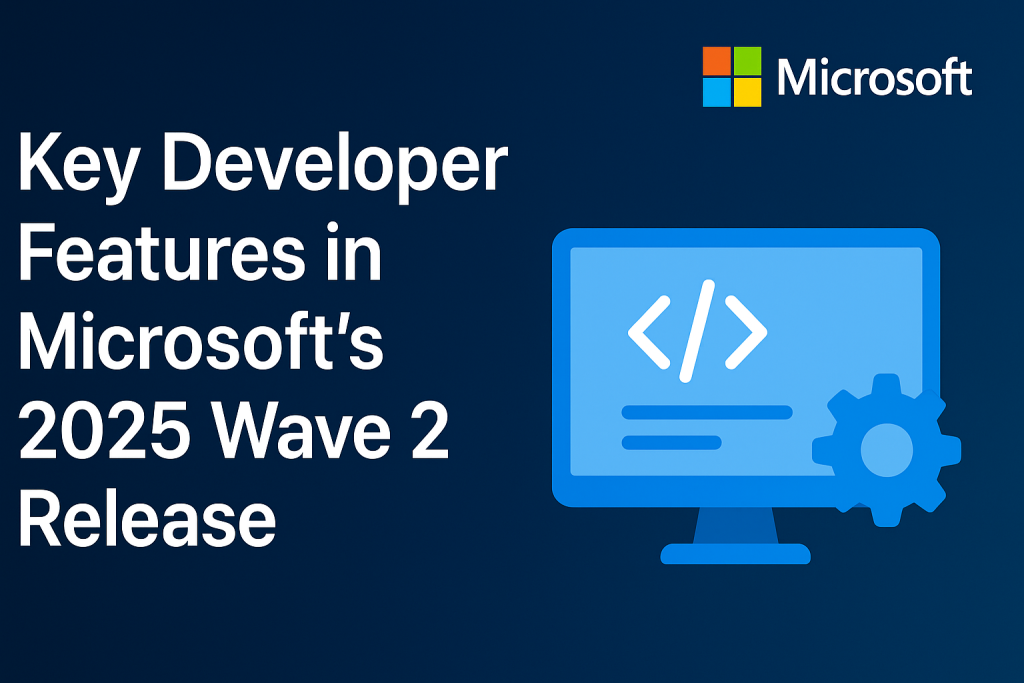What’s New for Developers in Microsoft 2025 Wave 2 Release

Microsoft has announced the 2025 Wave 2 release (October 2025 to March 2026). Instead of looking at every detail, let’s focus only on what matters for developers and technical consultants.
1. Power Platform and Dataverse
Before: Dataverse was mainly used as a database for apps and automations. AI features were limited and mostly experimental.
Now:
Dataverse has become smarter. You can use it for storing and serving data to intelligent apps.
Search inside Dataverse is improved so it can look through both structured data (like tables) and unstructured data (like documents).
New server capabilities allow Dataverse to connect directly with large language models.
Developers can create prompt columns and write business logic in a simpler way.
There is also a new central place for managing security, operations, and governance.
This means Dataverse is no longer just storage. It is now a foundation for building modern apps that can use AI.
2. Copilot Studio
Before: You could build chatbots with Copilot Studio, but they were basic question-and-answer tools.
Now:
You can build autonomous agents that can run processes from start to finish.
It is easier to connect with enterprise data and services.
You can fine-tune these agents using your own data to make them work better.
For developers, this is a big change. It moves from simple bots to agents that can actually perform business tasks.
3. Power Automate
Before: Automations were rule-based. You had to set up flows with clear triggers and conditions.
Now:
Automations can be generated more dynamically.
There are ready-to-use features for handling documents like invoices and forms.
Flows can pause and ask for human input when needed.
Administrators get better monitoring and governance tools.
This makes automation faster to build and easier to manage.
4. Dynamics 365
Before: Each module had some AI features, but they were scattered and not very consistent. Customization still required plugins, workflows, and JavaScript.
Now:
Sales and Service apps get deeper insights, risk detection, and email drafting.
Field Service scheduling is improved with more automation and better mobile support.
Finance adds a new journaling framework and rules engine that developers can extend.
Customer Insights gets real-time data profiles to support personalization.
Business Central introduces agents that can help with reporting and order processing.
This release focuses on making each module more connected and giving developers more points where they can extend or integrate.
5. Microsoft 365 Copilot
Before: Copilot was available across Outlook, Teams, and other apps, but mostly as a general helper.
Now:
Sales Copilot can automate repetitive sales tasks for specific teams or territories.
Service Copilot integrates with systems like Salesforce and ServiceNow.
Finance Copilot comes with ready-made templates for reconciliation, variance analysis, and collections.
These role-based copilots are now more practical, and developers can extend them with connectors and APIs.
Final Thoughts
For developers, the main shift in this release is clear. Earlier, we used to write custom code to control business logic. Now, the focus is moving towards building and guiding intelligent agents that can run processes on their own.
That means:
Get comfortable with the new Dataverse features like prompt columns.
Explore Copilot Studio for building business agents.
Learn how to extend Power Automate with the new capabilities.
Look at Dynamics 365 modules not just for customization, but for integration with agents and data.
This release is less about new screens or buttons, and more about changing the way solutions are built. Developers will spend less time coding repetitive tasks and more time connecting systems and guiding intelligent automation.
